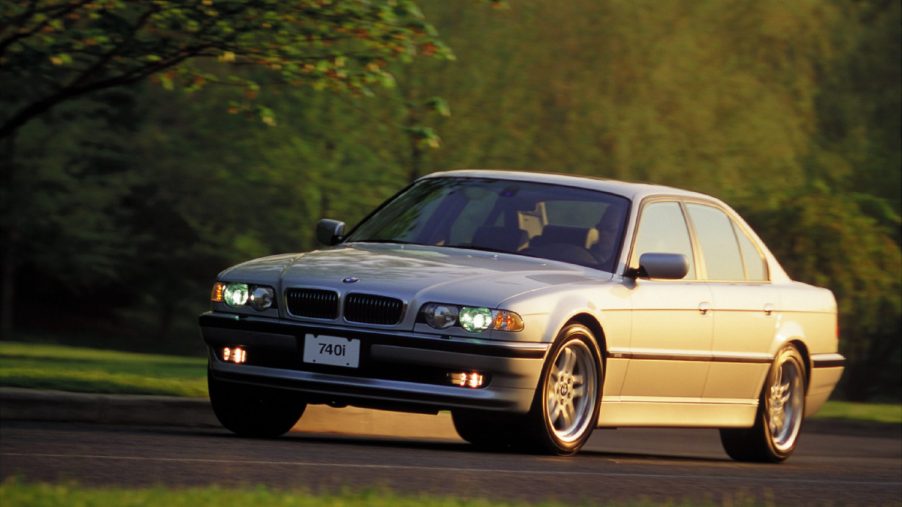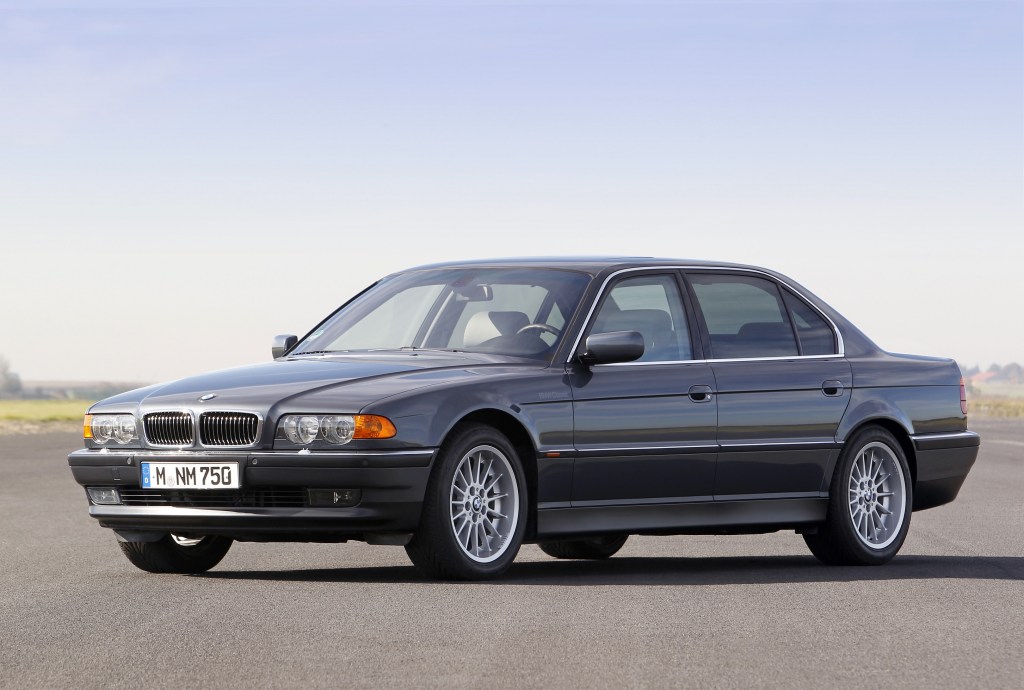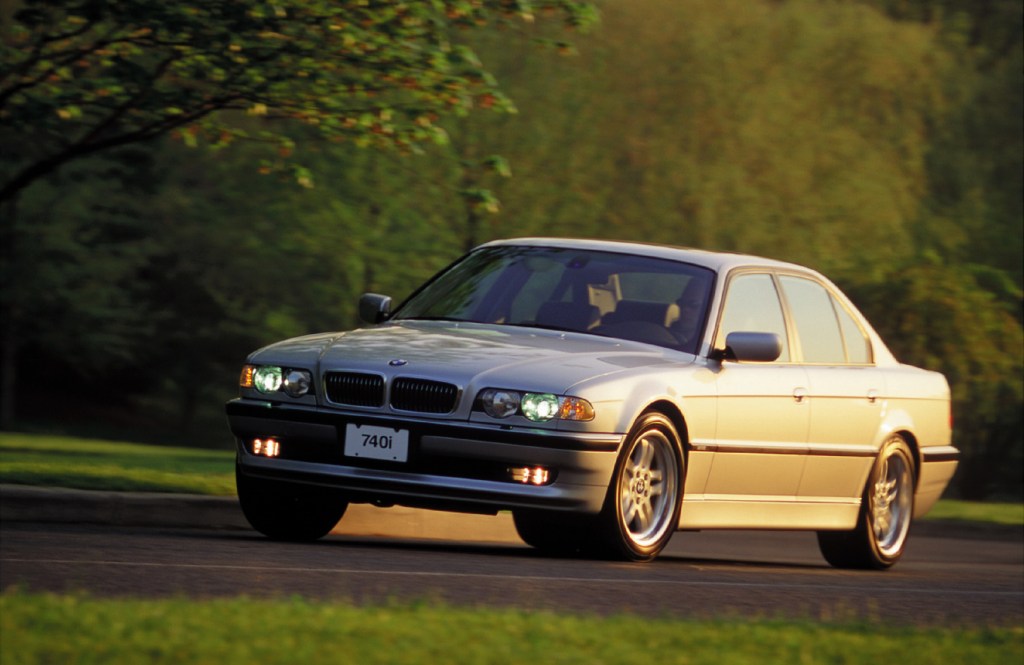
E38 BMW 7 Series Buying Guide: Reliable Budget Bond Luxury
E38 BMW 7 Series guide highlights:
- The 1995-2001 BMW 7 Series is still regarded as a brand high-water mark for its restrained styling and fun driving dynamics
- Available with a V8 and a V12, the enthusiast’s choice is the 740i Sport
- A well-maintained E38 BMW is generally reliable, and you can pick one up for $10,000-$15,000
Next to discount secondhand sports cars, cheap used luxury cars are some of the biggest temptations in the automotive world. And because BMWs combine aspects of both, buyer’s remorse often strikes particularly hard. However, while some used BMWs can be expensive problems, others are a bit stouter. Also, depending on your tastes, older Bimmers offer a certain elegant style. And few combine these various elements quite as well as the E38 BMW 7 Series.
The E38 BMW 7 Series is the definition of understated luxury

Although some Chris Bangle-era BMW designs, such as the M Coupe ‘clown shoe,’ have gained an appreciation, others still draw ire. The 2002-2006 E65 7 Series is a particular hate magnet, and not just because of its first-gen iDrive infotainment system. It’s because, for many, the preceding 1995-2001 E38 BMW 7 Series represents the apex of luxury design. Some might call it ‘boring,’ but for others, it’s ‘timeless.’
Admittedly, being newer, the E65 offers more technology and interior space than the E38, MotorTrend notes. However, BMW arguably started its trend of tech-heavy 7 Series cars with the E38 to compete with the then-new W140 S-Class. But while it’s not as advanced as a new 7 Series, the E38 did introduce some notable firsts.
For example, it’s the first car with standard side-curtain airbags (from 1998 onwards). The E38 is also the first 7 Series with traction control and the first BMW with satellite navigation. Scratch that, it’s the first European car of any kind with navigation. By 1998, stability control was standard; Xenon headlights and rain-sensing wipers were standard on 1999-2001 US-market models. And in 2000, BMW introduced adaptive cruise control as a Europe-only optional extra. Plus, depending on the trim, the E38 BMW offered things like an onboard telephone, heated rear seats, 14-way power-adjustable front seats, parking sensors, and upgraded audio systems.
However, the E38 BMW 7 Series offers more than tech. The interior still feels premium by modern standards. Also, with the optional long-wheelbase ‘iL’ models, the rear passenger space is “cavernous,” MT says. Autotrader describes “the feel of the buttons” as “magical.” It rides comfortably, too. And then, there’s its performance and handling.
An E38 BMW offers V12 750i smoothness, V8 740i sportiness, and bulletproof Protection, even if you’re not James Bond

| 1995-2001 E38 BMW 7 Series | |
| Engines | 740i/740iL: 4.0-liter ‘M60’ V8 (1995), 4.4-liter ‘M62’ V8 (1996-2001) 750i/750iL: 5.4-liter ‘M73’ V12 |
| Horsepower | 740i/740iL: 282 hp 750i/750iL: 322 hp |
| Torque | 740i/740iL: 295 lb-ft (1995), 310 lb-ft (1996-1998), 324 lb-ft (1999-2001) 750i/750iL: 361 lb-ft |
| Transmission | Five-speed automatic |
| Curb weight | 4145-4905 lbs (MotorTrend) |
| 0-60 mph time | 8.0 seconds (1995 740i) 5.9 seconds (2000 740i Sport) 6.4 seconds (750iL) |
To be fair, the E38 BMW 7 Series isn’t the German automaker’s sportiest sedan. Then again, even with Alpina’s help, neither is the modern version. Yet despite the age gap, the E38 doesn’t give up any handling prowess to its modern descendant, Autotrader reports. If anything, the late-90s 7 Series is the better driver’s car, thanks to its smaller size and more communicative, better-weighted steering.
However, the E38 BMW’s place in the James Bond film Tomorrow Never Dies wasn’t mere product placement. This is a comfortable highway cruiser that nevertheless has the proper reflexes of a fun back-road car. Furthermore, it has a standard limited-slip differential. And while the 750i is reasonably quick by modern standards, its V12 provides a smooth rush of power that’s still exhilarating. Little wonder Rolls-Royce used it in the Silver Seraph.
If you want something a bit sportier, though, look no further than the trim with ‘Sport’ literally in the name. It’s the E38 BMW 740i Sport, aka ‘740i M Sport,’ aka the ‘shorty sporty.’ It rides lower than the standard 740i and has stiffer springs, firmer shocks, and a bigger front sway bar. Also, a sequential-shift version of the five-speed automatic, upgraded torque converter, shorter final-drive ratio, and Sport-specific wheels. And inside, you get different wood trim and sport seats. The result is an E38 BMW that’s still luxurious but corners and accelerates significantly better.
However, BMW offered other E38s that channeled even more of the James Bond spirit. While today it outsources its bulletproofing services, BMW briefly offered bulletproof E38s under the ‘Protection’ moniker. And years before Aston Martin made a Goldfinger DB5, BMW made a functional version of the Tomorrow Never Dies car. Seriously, it’s called the 750iL Security Line, aka ‘740iLS,’ and all the gadgets work, The Drive reports.
The E8 BMW 7 Series is almost a classic, but it’s not necessarily a maintenance nightmare
By now, the oldest E38s technically qualify as classic cars. And even the youngest ones are over two decades old. So, before you put down any money, a pre-purchase inspection by a qualified, trusted, independent mechanic is recommended. But the good news is that, although not the most reliable used BMW, the E38 7 Series is the #2 or #3 pick in that regard.
The 740i’s M60 V8 is a stalwart BMW engine overall, and unlike the M62, no VANOS. Some early cars did suffer bore-lining damage from high-sulfur gasoline, but that’s a non-issue today. Apart from that, its only ‘flaws’ are age-related timing-chain stretching and cooling-system issues, BMW Tuning claims. Just make sure that the transmission fluid was regularly flushed; if not, make it a priority.
However, don’t discount the M62 entirely. It has some extra worry areas, such as the VANOS system and plastic timing-chain tensioners, but with proper maintenance, these aren’t deal-breakers. And stronger replacement parts are available, BMW Tuning notes.
The M73 V12 is a bit of a mixed bag, though. On the one hand, it doesn’t have VANOS, and “isn’t terribly complex,” Road & Track says. However, parts are expensive, especially the throttle bodies. And because it’s a 12-cylinder engine, it has more parts than a V8, which also means higher labor costs. So, unless you’ve got a robust maintenance budget, best stay away.
In addition, before buying any E38 BMW 7 Series, check that all its electronics work. These luxury sedans are fairly robust, but at their age, glitches sometimes show up. And while replacing, say, an ABS module isn’t too difficult, fixing the navigation gets pricey.
How much does an E38 cost today?
As noted earlier, the E38 BMW 7 Series is nearing classic age by now. So, high-mileage examples are the norm, rather than the exception. However, sub-100,000-mile E38s are still out there, though they naturally command higher prices.
Still, as with a newer 7 Series, buying used reaps you the benefits of depreciation. In 2000, a 740i Sport started at $64,200; that’s just over $103,600 in 2021 money. But a decent-condition example today typically costs $10,000-$15,000.
Follow more updates from MotorBiscuit on our Facebook page.


